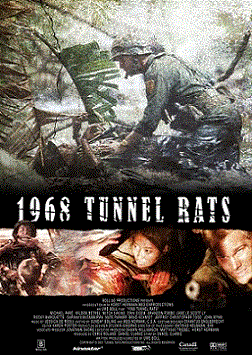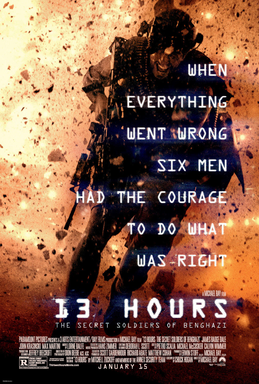Usually when a new war movie is
released, I try to get to the theater as soon as possible to review it so all
my fans (both of them) will know whether to go see it. In this case, I waited until everyone else in
the country had seen it. The reason is I
had a gut reaction against it. After
having been burned by all the Star Wars movies since the second one, I was not
exactly going to camp out over night for this one. The belatedness was not due to it not being a
war movie. While certainly firmly in the
sci-fi genre, it does fit secondarily into the war genre. In the future, I will be compiling my top ten
sci-fi war movies. (One of many projects
that will keep me semi-retired.) Let’s
see if this one will make the list.
“Rogue One: A Star Wars Story” is the first in a proposed
trilogy of Star Wars stand-alones.
Someone at Lucasfilms had a discussion with their boss and convinced him
that although the last five Star Wars films were fantastic and not at all
pieces of shit, maybe a different approach might be fun. Coppola bought it, thankfully. Gareth Edwards was tabbed to direct and he
decided to develop immediate good will from the non-Koolaid drinkers by
jettisoning the opening crawl that even people from Outer Mongolia associate
with Star Wars movies. He got the green
light to populate the movie with two outstanding actors and the ghost of
another and then fill in the cast with unknowns. And most importantly, he decided to Hell with
four year olds. Sorry Jar Jar Binks and
Ewoks fans.
The movie opens on some
backwoods planet named “who cares?”
Galen Erso (Mads Mikkelson) is a genius scientist who is needed by an
evil less genius scientist named Orson Krennic (Ben Mendelsohn) to finish their
big project – a weapon that can destroy planets. Galen has been hiding for years, but
Hollywood finds him. In the process, his
daughter Jyn decides to postpone her well-rehearsed escape long enough to see
Krennic kill her mother. Revenge motive
established, the movie jumps fifteen years.
Fifteen years of feist-developing.
She is rescued from a labor camp because the rebel Alliance needs her to
make contact with her father. A defector
pilot named Bodhi Rook (Riz Ahmed) has been sent by Galen to clue them in on a
weakness in the Death Star he has helped Krennic complete. A hot shot rebel named Sans Holo, actually
Cassian Andor (Diego Luna), and his wise-cracking robot K-2SO (think C3PO with
a ‘tude) are to accompany Jyn (Felicity Jones) on a mission to locate her
father. Cassian has the corollary secret
order to eliminate Galen. Their stop at
Jehda City results in a nifty bout of urban combat, but the end result is not
positive for Jehda City. Evil weapons
gotta be tested. On the plus side, the massive explosion sets Jyn and her
rapidly growing gang of rogues free from internment. (I hope the screenwriters feel guilty about
this plot device.) Now it’s off to Eadu
to rescue Daddy (or assassinate him).
When they return, the rebel council has a decision to make. With the threat of the Death Star confirmed,
some want to cave and others want to go down in a blaze of glory. Although the comments are divided evenly
between the wimps and the kamikazes, the tribal council decides to surrender
without a vote. This is in spite of a
spirited call to arms by Jyn. She does
convince some of the braves to leave the reservation to kick and receive kicked
asses. And get the plans to the Death Star. It’s a suicide mission behind enemy
lines – did I mention it’s a war movie? Our original motley crew is
supplemented by some nameless (the screenwriters having run out of super cool
names) equivalents of Colonial Marines (“Aliens” reference). What follows is a mash-up of the Battle of
Leyte Gulf, the Battle of Britain, Omaha Beach, and the Raid on Telemark. And
Hiroshima. Something for everyone (above
the age of four) – sabotage, espionage, dog fights, infantry vs. tanks, ships
colliding, etc. The tactics are acceptable, considering Dale Dye was not on the set. The screenwriters must have researched the Battle off Samar and copied the moment when a tug boat was used to shove the Nagato into the Yamato.
In an interview, Edwards stated
that he looked upon the project as a war movie.
He was not kidding. It has
elements of several war subgenres. It
appears that if you want to combine those subgenres into entertainment that
does not defy reality, you can set it in a galaxy far, far away. Ironically, the movie actually starts with a
standard Western trope. The old “you
killed my ma” theme. The main template
is the motley band on a quest. The core
unit is heterogeneous, naturally. (But
no one is from Brooklyn.) This includes the hot shot, the feisty female, the
spiritual blind monk, his Vikingish mercenary buddy, and the wise cracking
robot. I have to admit I am a sucker for
these quest groups. And I have learned
to not get too attached to the members.
I advise the same to you. Don’t
expect some dysfunctionality. The film
is all black or white, there are no greys. Speaking of black, the villains are worthy of
the white hats. Darth Vader has his best
performance since “Empire”. The movie
makes perfect use of him. It is not a
stunt like you would have expected. But
even the stunts work. Peter Cushing’s
face appears as Governor Tarkin. Before
you overdose on umbrage, it is amazingly seamless. Spoiler alert: Cushing has been dead since 1994. Normally I would make a crack about his
winning the acting honors, but the living cast is good, too. Felicity Jones is great as Jyn. She and the rest of the heroes should be in
for some big pay days in the sequels.
(Those of you who have seen the movie will be laughing at that
prediction.) For you war movie fanatics,
that’s Jiang Wen of “Devils on the Doorstep” as the bearish Blaze Malbus (who
wins name honors). He and the others
make you forget that the two real actors (Mads Mikkelson and Forest Whitaker)
are barely used. Maybe they will have
bigger roles in the next film.
“Rogue One” is an outstanding
movie. If not for nostalgia and the
desire to not get beaten up by a mob of pocket-protecting geeks, I might argue
that it is the best Star Wars movie. It
is undoubtedly better than all but “New Hope” and “Empire” and much better than
the last one. It does not pander to its
audience. The nods to the other films
are subtle and not ham-fisted like in “The Force Awakens”. The closing scene is a perfect lead in to “A
New Hope”. If you ever wondered “who had
to die to get those plans?”, now you’ll know. But it’s the action that will be
remembered. The last half hour has
everything but the kitchen sink thrown in (and blown up). The film manages to intercut between the
“naval battle”, the ground support air battle, the foot soldiers, and the
infiltration. You’ll wish you had Saw
Gerrera’s air tank.
GRADE = A

.jpg)



.png)



